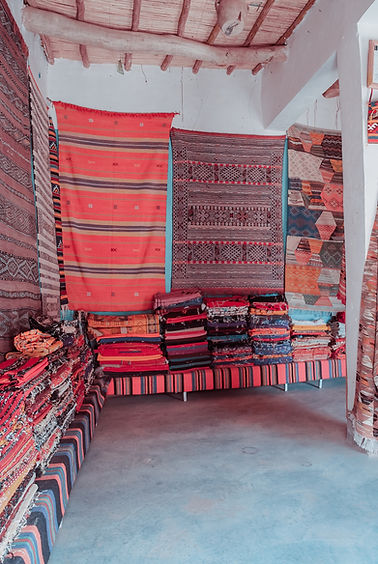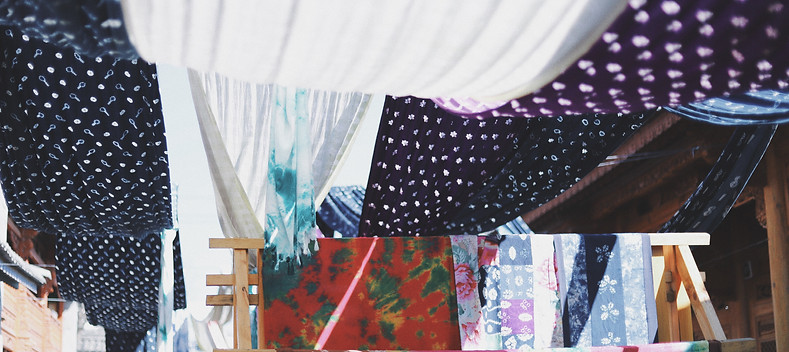Creativefolio

Reviving Indigenous Identity: How AI, Textiles, and Museums Can Transform Northeast India's Cultural Future
A Forgotten Treasure
While studying museum practices recently, I had the chance to visit the Purba Bharati Museum in Nalbari, Assam. Hidden away from the limelight, it holds some of the most precious artifacts of Northeast India's history — palm-leaf and paper manuscripts, ancient textiles, musical instruments, and relics that tell the story of a proud civilization.
Yet, it was a bittersweet experience.
A handful of elderly volunteers maintain this treasure trove — working selflessly, without formal support or government funding. The infrastructure is crumbling, exhibits are aging, and public interest remains alarmingly low.This is not an isolated case. Across the Northeast — and indeed much of India — museums struggle to engage the modern generation.

The Crisis of Cultural Disconnect
According to a survey published by the Indian National Trust for Art and Cultural Heritage (INTACH) (2022), over 65% of Indian youth surveyed had not visited a museum in the past year. The key reasons cited were:
-
Outdated and poorly maintained exhibits
-
Lack of interactive experiences
-
Perceived irrelevance to modern life
A similar UNESCO report on “Museums in South Asia” (2021) points out that museums that fail to adapt to contemporary expectations risk becoming "repositories of dead culture rather than dynamic centers of living heritage."
This crisis is even more acute in regions like Northeast India, where cultural identity and heritage are deeply entwined with daily life — but are often overshadowed on the national stage.
Why Museums Matter More Than Ever
Today, issues surrounding identity, culture, and belonging are more pressing than ever.
When communities lose touch with their heritage, it creates space for cultural erosion, misunderstanding, and division.
Museums are not just about preserving the past — they are about telling the story of a people.
They can be powerful tools for tourism, education, innovation, and community pride.
The Economic Survey of India (2020) even notes that cultural tourism accounts for over 17% of India's total tourism revenue — an immense potential if harnessed correctly.
A Vision: Merging Tradition with Technology
We live in an era where AI and technology can ethically and creatively help rejuvenate culture. Here's how:
1. Reviving Indigenous Motifs and Textile Designs
AI can analyze ancient motifs and textiles from museum archives, filling in missing pieces and reconstructing patterns that have been lost over centuries.
Example:
MIT’s Heritage Reconstruction Project used deep learning to restore and recreate damaged Roman frescoes with astounding accuracy (source).
In Northeast India, traditional designs like Bodo’s Dokhona, Mishing’s Ribi Gaseng, and Assamese Gamosa could be digitally archived, restored, and even adapted for contemporary fashion through ethical AI innovation.


2. Digitizing Manuscripts and Artifacts
Natural Language Processing (NLP) and Computer Vision technologies can digitize and translate ancient manuscripts written on palm leaves or indigenous scripts, making them accessible worldwide.
Example:
The British Library has used AI models to digitally restore and translate damaged manuscripts from Southeast Asia (source).
3. Transforming Museums into Interactive Community Spaces
Imagine museums where visitors:
-
Interact with virtual guides (powered by AI).
-
Participate in immersive VR experiences recreating historical events.
-
Design their own textiles inspired by ancient motifs using digital tools.
Example:
The Smithsonian Institution launched the "Open Access" project, allowing anyone to interact with over 2.8 million artifacts digitally (source).
Call to Action: A Shared Responsibility
If we are serious about preserving and celebrating our indigenous identity, we must act now:
-
Government bodies and cultural ministries must invest in digitizing and modernizing local museums.
-
AI developers and researchers should collaborate with historians and weavers to ethically revive ancient arts.
-
Youths and communities must engage actively — turning museums into living spaces, not dead archives.
As young citizens, professionals, technologists, and artists — this is a battle for our identity, not just for history's sake but for the future we want to build.

Museums like Purba Bharati may seem small and worn out today, but they hold the seeds of a cultural renaissance. By amalgamating Textiles, AI, and Community Building, we can honor the past — and build a vibrant, rooted future. Let us give today’s youth the tools and platforms to uplift and innovate — ethically, respectfully, and creatively.
The time to act is now. And it begins with a visit to your local museum.
References:
-
MIT AI Heritage Reconstruction Project (2021)
-
British Library Digitization & AI Translation Project (2020)
-
Smithsonian Institution Open Access Initiative (2020)
-
Economic Survey of India 2020-21 - Chapter on Tourism